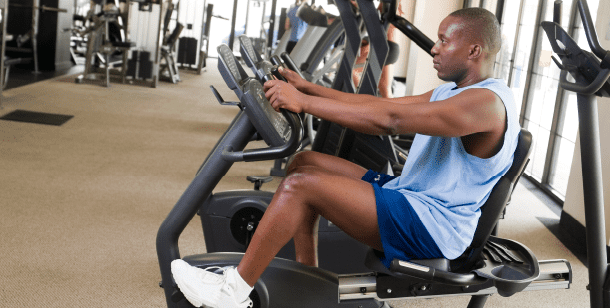Anyone who has experienced shin splints has probably asked “How long do shin splints last?”
In this article, we will discuss everything you need to know about identifying, treating, and avoiding shin splints.
What Are Shin Splints?
The tibia, the primary bone affected by shin splints, is the largest bone in the lower leg and is responsible for helping support your body weight and maintaining stability while you stand. Medial tibial stress syndrome, commonly referred to as shin splints, occurs when the muscles and bones in the lower leg become stressed and tender as a result of overuse; this overuse causes pain and inflammation in the shin bone and the surrounding muscle and connective tissues and can occur in one or both legs.
Causes and Symptoms of Shin Splints
Many cases of shin splints are caused by overuse, which simply means that the injury results from a repetitive or consistent strain. Most commonly, shin splints can be caused by the following:
- Playing Sports
- Exercising on Hard Surfaces
- Wearing Ill-Fitting or Worn-Out Shoes
- Having Flat Feet
- Pronating the Feet When Walking
- Increasing Exercise Duration, Intensity, or Distance Too Quickly
- Attempting A New High-Impact Sport
- Having a Higher BMI
This high-impact activity puts undue and consistent strain on the shin bones and can result in inflammation and swelling that causes shin pain. This pain can be acute or sharp in nature, coming and going as pressure is applied to the shin, or it can be a consistent dull ache in the afflicted area. This pain is often brought on or made worse by exercise.

Who is at Risk of Shin Splints?
Anyone can experience shin splints, but certain people may find that they experience them more frequently. The general rule is that the more stress your shins experience on a consistent basis, the more likely you are to develop shin splints.
Signs That Shin Splints Are Healed
It is important to keep in mind that no longer experiencing shin pain does not mean that your shin splints are completely healed. Pain and inflammation are symptoms of injury, not the injury itself.
You will know that you no longer have shin splints when:
- You can jog, sprint, and jump without experiencing pain.
- Your injured leg feels just as strong as your healthy one.
- You cannot detect any muscle weakness.
- Your injured leg is equally as flexible as your healthy one.
- You can painlessly apply steady pressure on previously tender areas.
Treatments for Shin Splints
Minor shin splints can be easily treated at home! Caring for shin splints comes down to a few simple practices.
Decrease Activity or Rest
Giving your injured legs time to rest is the best way to allow shin splints to heal. Become aware of what motions or activities cause your shins pain and abstain from those actions while you give your shins time to heal. Additionally, you should abstain from the high-impact activities that might have caused the shin splints originally.
Ice Your Shins
Apply ice to your shins for roughly 30 minutes several times a day to ease pain and swelling.
Medicine
Anti-inflammatory drugs (NSAIDs) can be used to relieve pain, swelling, and other discomfort associated with shin splints. When taking anti-inflammatory painkillers, be sure to closely follow dosage instructions.

Stretching
Taking the time to gently stretch every part of your legs before working out and during recovery time is a great way to prevent and treat shin splints.
Massage
Gently massaging leg muscles, specifically the muscles and tissue surrounding your shins, can help to release tension and aid in recovery from shin splints.
Kinesiology Tape
Also known as “KT Tape,” kinesiology tape is a flexible athletic tape that can help reduce pain and add support when applied to an injured muscle.
Physical Therapy
A physical therapist can offer relief for severe, long-lasting shin pain by providing you with exercises that will both relax and strengthen your injured leg, thus alleviating pain and aiding in recovery.
How Long Do Shin Splints Last?
The length of time your shin splint will last depends on the severity of your injury and how well you are taking care of it. While most minor shin splints will clear up in two to three weeks with rest, a severe shin splint can take anywhere from three to six months of proper treatment to totally heal.

How to Prevent Shin Splints
You can avoid shin splints by adopting a few simple lifestyle habits. These habits include:
- Wearing shoes that fit well and properly absorb shock.
- Running on softer surfaces whenever possible.
- Slowly increasing workout intensity instead of starting off at a high intensity.
- Choosing to engage in low-impact activities.
Village Emergency Centers Can Help
If you suspect that you may have shin splints, it is important that you don’t attempt to push through the pain, as this will only increase the likelihood and severity of an injury.
If pain from your shin splints does not improve with rest; if your shins are swollen, red, or hot to touch; or if you suspect that your shin splint has progressed into a stress fracture or break, take the road to Village to get help. A team of trained medical professionals is waiting at each of our state-of-the-art emergency facilities to assist you with treatment and pain management for shin splints. Visit our website today to learn more about our services and find your Village.
